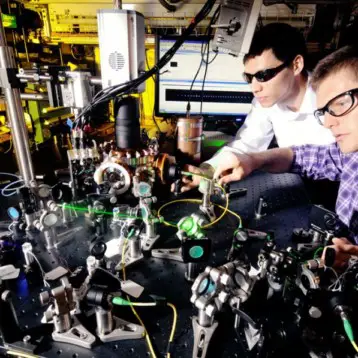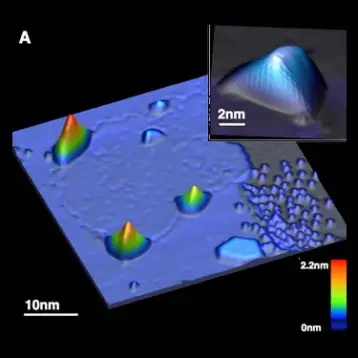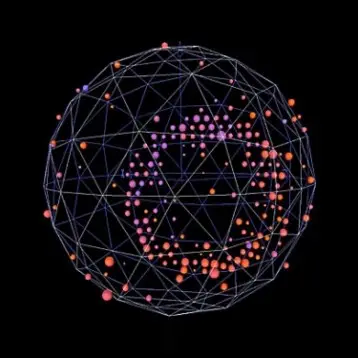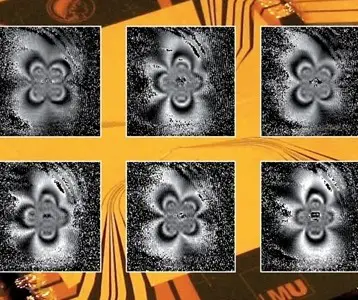|
A single caesium atom was positioned within laser beams that held the atom steady. The atom simultaneously functioned as a random walker and a coin. A random walk is an experiment plotting the motion of a particle that is dictated by the outcome of the state.
For instance, say a person flips a coin. For every heads outcome, the person takes a step right, and for every tails outcome, the person moves a step to the left. The experiment is performed 1000 times sequentially and the person’s final position is noted. The result of the experiment usually ends up with a typical bell curve graph, which signifies that the person never ventured very far from the start position.
Atoms can assume diverse quantum mechanical states, comparable to heads and tails of a coin. However it is slightly more complex at the microcosmic level because quantum particles can exist in a superposition of different states. The researchers at Bonn used laser beams to develop two conveyor belts which stretched the caesium atom in two different directions, the ‘heads’ part to the right and the ‘tails’ part to the left.
“This way we were able to move both states apart by fractions of a thousandth of a millimetre” – explained Dr. Artur Widera from the Bonn Institute of Applied Physics. Subsequently, the researchers ‘threw the dice once more’ and positioned the components into a superposition of heads and tails once again. By starting off with the ‘random walk’ experiment, the physicists at the University of Bonn have now found that the unique resultants found actually point to a new type of phenomenon called ‘quantum walk’.
|
For comparison the scientists destroyed the quantum mechanical superposition following each ‘throw of the coin’. By doing so, they turned the ‘quantum walk’ into a ‘random walk’. Professor Dieter Meschede, lead researcher on the study, has been driving the advancement of future quantum computers. Due to the ‘quantum walk’ finding, the team has now attained a further decisive accomplishment on this path. “With the effect we have demonstrated, entirely new algorithms can be implemented” – said Widera.
Image caption: a) A single caesium atom is trapped in grid of light. The atom has two states, red and blue. It is put in a coherent superposition of these states. b) The light grid is dependent on the state of the atom. It can be visualised as a red and a blue grid where the red state of the atom only sees the red grid and the blue state of the atom only sees the blue grid. If both these grids are moved in different directions, the red part of the atom moves to the left, the blue part moves to the right. c) If both subgrids overlap again, the atom is spread over two grid sites, i.e. it is simultaneously located at the right and left. d) After each part of the atom has again been brought into a superposition of both states and the state-dependent shift has been carried out, the atom is delocalised over three grid sites, where two parts of the atom are now situated in the same grid site. At this grid site, both parts can mutually enhance or annihilate themselves, i.e. interference occurs.
TFOT has previously written about how an international team of researchers manipulated the quantum state of a single electron in a silicon transistor by placing the electron in two places at once. You are also welcome to check out our article about quantum cat’s ‘whiskers’ and the receptiveness of quantum entangled systems.
Additional information on the ‘random walk’ experiment can be obtained at University of Bonn’s website.
Icon image credit: T. Weitkamp, European Synchrotron Radiation Facility (ESRF), Grenoble, France.












